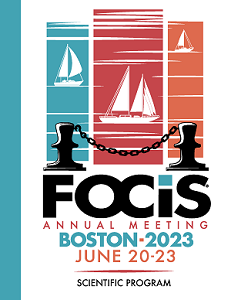Autoimmune Diseases
Session: Mechanisms of Autoimmunity
Single Cell Sequencing Suggests Enteric Origins of Putative Pathogenic T Cells in hla-b27-associated Inflammation
Wednesday, June 21, 2023
3:30 PM - 3:45 PM
Location: Salon F-G

Michael A. Paley, MD PhD
Assistant Professor
Washington University School of Medicine
Saint Louis, Missouri, United States
Presenting Author(s)
Disclosure(s):
Michael A. Paley, MD PhD: AbbVie: Consultant/Advisor (Ongoing); Eli Lilly: Grant Support (Ongoing); JK Market Research: Consultant/Advisor (Terminated); Priovant Therapeutics: Consultant/Advisor (Ongoing)
Abstract Text: HLA-B27 is associated with ankylosing spondylitis (AS) and acute anterior uveitis (B27AU), which cause joint and eye inflammation, respectively. As HLA-B27 is an MHC class I molecule, antigen presentation to CD8 T cells may be central to disease pathogenesis. We have recently identified clonal expansion of public T cell receptors (TCRs) that are shared across patients with AS and B27AU and enriched in the joint or eye over the blood. These TCRs recognize both bacterial and self-peptides presented by HLA-B27, suggesting a role for molecular mimicry in HLA-B27-associated inflammation.
The main bacterial peptide recognized by these public TCRs is derived from yeiH, a gene present in E. coli, Shigella, Salmonella, and other enteric microbiota or pathogens. It remains unclear, however, whether these AS- and B27AU-associated T cells have had a prior antigenic encounter within the gastrointestinal tract. We therefore performed single-cell RNA sequencing (scRNAseq) and T cell receptor sequencing (scTCRseq) on immune cells from the eye and blood during B27AU (n=5) and non-B27AU (n=14). In this analysis, we found that the expanded T cell clones in B27AU contained higher expression of TNF and IFNG, suggestive of a pro-inflammatory transcriptional program. Moreover, we were able to identify an additional expanded TCR sequence that also recognized YEIH. Finally, expanded TCR clones were enriched for a transcriptional program associated with intestinal CD8 T cells.
Collectively, our data suggest that, in HLA-B27-associated inflammation, the early antigen exposure and differentiation of putative pathogenic CD8 T cells may have occurred in enteric organs.
The main bacterial peptide recognized by these public TCRs is derived from yeiH, a gene present in E. coli, Shigella, Salmonella, and other enteric microbiota or pathogens. It remains unclear, however, whether these AS- and B27AU-associated T cells have had a prior antigenic encounter within the gastrointestinal tract. We therefore performed single-cell RNA sequencing (scRNAseq) and T cell receptor sequencing (scTCRseq) on immune cells from the eye and blood during B27AU (n=5) and non-B27AU (n=14). In this analysis, we found that the expanded T cell clones in B27AU contained higher expression of TNF and IFNG, suggestive of a pro-inflammatory transcriptional program. Moreover, we were able to identify an additional expanded TCR sequence that also recognized YEIH. Finally, expanded TCR clones were enriched for a transcriptional program associated with intestinal CD8 T cells.
Collectively, our data suggest that, in HLA-B27-associated inflammation, the early antigen exposure and differentiation of putative pathogenic CD8 T cells may have occurred in enteric organs.
Learning Objectives:
- Upon completion, participants will be able to describe the role of HLA-B*27 in autoimmune disease.
- Upon completion, participants will be able to describe the suspected origins of pathogenic T cells in HLA-B*27 positive autoimmune disease.
- Upon completion, participants will be able to explain the pathogenesis of ankylosing spondylitis.

